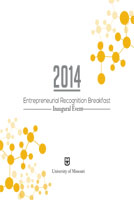Description
<p><a href="#volumes">Jump to volumes 1-7.</a></p>nn<p>Vetusta Monumenta (Ancient Monuments), the print series published from 1718-1906 by the Society of Antiquaries of London, is now a monument in its own right: it offers the richest record available of transformations in the study of the cultural past over those 200 years. Artists, scholars, and amateur researchers relied on the visual technologies perfected in this series for envisioning the past, and as their focus shifted over time to different kinds of artifacts and new ways of understanding, the beautiful images in Vetusta Monumenta continued to provide a foundation for new visions of antiquity. </p>nn<p>In addition to the complete set of scans available here, there is also an ongoing digital edition of Vetusta Monumenta, that aims to make the original images and texts accessible through both interactive digital facsimiles and new scholarly commentary. For the digital edition, see <a href="http://vetustamonumenta.org"> http://vetustamonumenta.org.</a></p>nn<p>The first seventy engravings in the series were bound into a volume by the Society in 1747. The decision to consolidate the prints in this way and recirculate them in the form of a plate book proved to be a crucial step toward their preservation. (Not coincidentally, the antiquaries saw engraving as integral to their mission of preserving the monuments themselves, many of which were already decaying at the time of publication and some of which are now altered or lost.) Most readers of Vetusta Monumenta over the last 100 years have only encountered the work as a set of seven bound volumes in a library. The University of Missouri library, where this digital version was created, is fortunate to be one of eleven libraries in the world to hold a complete set. Although they are rare, these volumes have provided far better access to readers and scholars than the few scattered individual prints that survive in various private and public collections. As an open-access digital edition, the online Vetusta Monumenta expands that access to many more users worldwide.</p>nn<p>To a reader of the bound volumes in a modern library, it is not readily apparent that the prints they contain were published one by one over a period of years. Yet the idea of combining them into a book only came up after the series was well established. The digital edition allows the user to approach each individual plate either as a freestanding work, as the original audience did, or as part of a larger whole assembled after the fact. Our international team of expert contributors has provided commentary on the occasion that inspired each print, including the choice of subjects--which ranged from Roman mosaics to ruined castles, from ancient maps to modern portraits to fragments of buildings and manuscripts in just the first three decades of publication--along with zooming and other tools to promote close scrutiny of the individual print. We have also noted changes in method resulting from the gradual drift toward book publication, including verbal explanations of the depicted objects that gradually spilled over from the plates into lengthy letterpress essays printed alongside them. Digital reproduction encourages the close study of each print in its immediate context; the full edition also provides navigation to clarify the connections established--historical, geographic, and aesthetic, among others--when prints were collected into volumes at intervals (1747, 1789, and 1796 for the first three volumes).</p>nn<p>The uniform appearance of the bound volumes belies the remarkable diversity of monuments and styles represented by the individual plates. As early as 1784, a Fellow of the Society of Antiquaries named John Fenn recognized the need for a system of classification to understand what kinds of objects were being chosen for inclusion in Vetusta Monumenta and why. This edition provides a similar kind of thematic overview, but from a twenty-first-century perspective it is also clear that the diversity of subjects reflects change over time in the techniques of visual reproduction and in the organization of knowledge. The Society of Antiquaries itself received a royal charter in 1751 and grew to 800 members by 1820, but even the small group of founders brought a wide variety of skills and interests to the task. If the gifted engraver George Vertue had not joined the society very early in its history, the group could hardly have defined their mission as "collect[ing] and print[ing] . . . all the ancient Monuments that come into their hands." Several other founders, including John Talman and William Stukeley, were skilled draftsmen who supplied preparatory drawings for several of the early prints. Other members of the society influenced the choice of subjects for Vetusta Monumenta by providing access to objects or drawings from their collections, by using their local influence in regions where antiquities were located, or by using their positions in other institutions that held artifacts or monuments, such as the College of Heralds and the Tower of London.</p>nn<p>By the nineteenth century, this network had expanded greatly and an increasing number of professionals contributed to Vetusta Monumenta, making it a superb record not only of antiquities found in Britain but also of methods and techniques for the discovery of the past. Fenn's classification of the prints in 1784 registers this historical sense of the print series as a record not only of objects but of evolving methods in the discipline. His survey of seven included types of monuments, though slightly haphazard, still provides the most compact introduction to Vetusta Monumenta: I. Antiquities (British, Roman, Saxon, Danish); II. Coins, Medals, and Seals; III. Castles, Palaces, Gates, Crosses; IV. Abbeys, Churches, [and related architectural features]; V. Portraits; VI. Historic Prints and Processions; VII. Plans, Maps, and other Prints.</p>nn<p>A digital scholarly edition of Vetusta Monumenta Volume I is available at <a href="http://vetustamonumenta.org">vetustamonumenta.org</a>n n<a name="volumes" />
